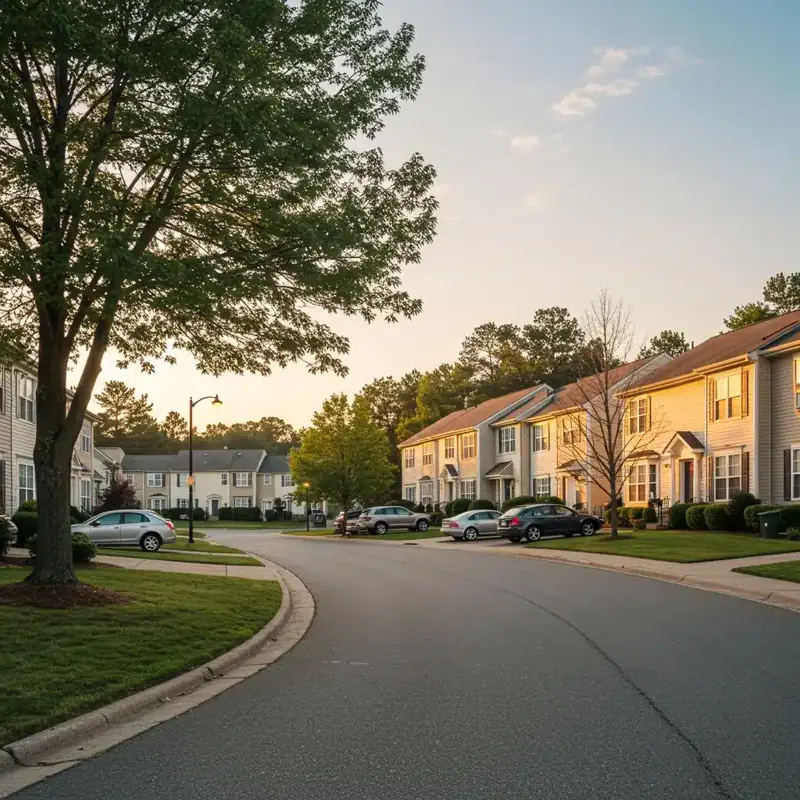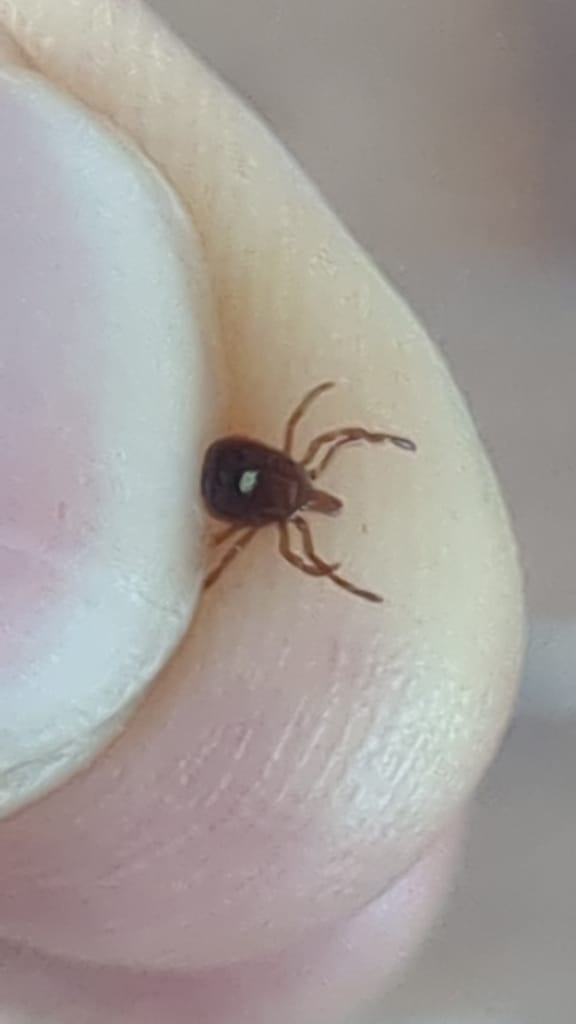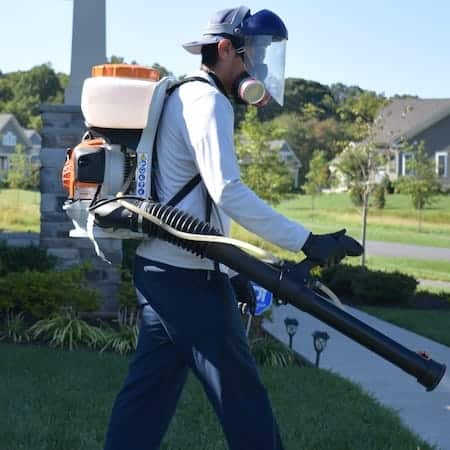Locust Grove Mosquito Control
Environmentally considered mosquito control with proven results for Locust Grove homes






Family Owned
57 years of experience serving local homes with pets and kids.
Lower Risk Products
Our research team picked materials better for the planet & your home
No Contracts
We don't lock you in with paperwork - stay because it works!
About Our Locust Grove Mosquito Control Programs
Better Termite & Pest Control has been protecting Locust Grove properties since 1968, bringing three generations of mosquito management expertise to your backyard. Our comprehensive mosquito control programs combine proven science with environmentally conscious products to help you reclaim your outdoor spaces.
Our unique two-pronged approach targets mosquitoes at every stage of their lifecycle. We use barrier spray treatments along your property\'s ecotone combined with targeted growth regulators that disrupt breeding cycles. Additionally, our research team has carefully selected products like Essentria and EcoVia - botanical-based solutions that deliver results while meeting our strict internal standards.
As a family-owned business, we have removed 9 harsh chemicals commonly used in our industry because we believe in using only products we would feel comfortable applying around our own homes. Every Locust Grove mosquito control plan includes unlimited callbacks, so if you spot activity between visits, we will return at no extra cost to retreat the area.
Get a Free Quote
Choose the option that works best for you
Option 1: Call a Licensed Tech
Option 2: Submit Your Info to our Team
How Our Locust Grove Mosquito Control Works
Our licensed technicians use a systematic approach that combines immediate knockdown with long-term population control. Using backpack sprayers, we apply a targeted adulticide to shaded resting areas where mosquitoes hide during daylight hours. This treatment also includes an Insect Growth Regulator (IGR) that prevents larvae from developing into biting adults.
Treatment timing begins with an early-season kickoff in April, followed by monthly visits during peak mosquito months through October. Each visit focuses on the transition zones where your landscaping meets natural areas - basically the spots where mosquitoes love to rest and breed.
Our process starts with a detailed property inspection to identify hot spots like rain barrels, storm drains, and moisture-retaining areas. After applying targeted treatments to foliage, ivy patches, and shaded brush, we deploy larvicide in standing water containers. Following each service, you will receive an email report detailing exactly what we treated and which products we used on your property.

In2Care Mosquito Control System for Locust Grove Properties
The In2Care system represents a breakthrough in eco-minded mosquito control for homeowners who prefer minimal spray applications. These innovative stations contain specially treated gauze strips infused with pyriproxyfen larvicide and Beauveria bassiana fungus - two agents that specifically target mosquitoes while remaining harmless to beneficial insects.
Here is where the science gets interesting: mosquitoes visit these stations seeking water and resting spots. When they contact the treated gauze, they become contaminated with both the larvicide and fungus. The mosquitoes then carry these agents to their breeding sites, essentially auto-dosing other larvae and contaminating additional mosquitoes in the population.
This autodissemination approach creates a ripple effect throughout the local mosquito population. Because mosquitoes naturally move between multiple breeding sites, a single contaminated female can impact dozens of locations across your neighborhood. The result is long-term population control with a significantly reduced spray footprint compared to traditional barrier treatments.
In2Care Station Components and Function
Each In2Care station is strategically placed in shaded areas where mosquitoes naturally seek shelter during hot weather. The stations feature a black exterior that attracts heat-seeking mosquitoes, while the interior gauze contains the dual-action treatment agents.
The pyriproxyfen larvicide prevents mosquito larvae from developing into adults, effectively breaking the reproductive cycle. Meanwhile, the Beauveria bassiana fungus works more slowly, allowing contaminated mosquitoes time to visit multiple breeding sites before succumbing to the treatment. This delayed action is crucial because it maximizes the spread of control agents throughout the local mosquito population.

Tick Treatment in Locust Grove
Tick control begins in March with granular applications designed to target the spring nymph surge when Lyme disease transmission risk peaks. These treatments focus on the ecotone areas where residential lawns meet wooded environments - exactly where most tick encounters occur.
From April through October, we apply topical sprays along yard perimeters and transition zones where ticks naturally quest for hosts. November brings our final granular application targeting ticks preparing for winter dormancy, completing the annual protection cycle.
Disease prevention remains our primary focus because ticks in our area carry multiple pathogens including Lyme disease, anaplasmosis, and Powassan virus. Early intervention during peak activity periods significantly reduces your family\'s exposure risk throughout the outdoor season.
Addressing Spring and Fall Tick Surges
Spring treatments concentrate on wooded edges, areas around bird feeders, and moisture pockets where ticks overwinter and become active. We pay special attention to pathways between natural areas and your outdoor living spaces because these represent the highest risk zones.
Fall applications target adult ticks seeking final blood meals before winter. Client education focuses on habitat reduction techniques like maintaining clear borders between lawn and wooded areas, removing leaf litter, and keeping vegetation trimmed around outdoor activity zones.

Local Mosquito Insights in Locust Grove
Locust Grove\'s location presents unique challenges for mosquito management due to the area\'s mix of residential development and natural wooded areas. The most common species we encounter include Aedes albopictus (Asian tiger mosquitoes), Culex pipiens (house mosquitoes), and various floodwater mosquito species that emerge after summer storms.
Primary breeding grounds in Locust Grove include storm drainage systems, decorative rain barrels, and the wooded ecotone areas where residential properties transition into natural forest. These edge environments create perfect microclimates for mosquito development because they offer both moisture and protection from wind.
Regional challenges include hot, humid summers that accelerate mosquito development cycles and seasonal flooding that creates temporary breeding sites. After heavy rainfall, we often see population surges as floodwater mosquitoes emerge from previously dry areas that suddenly become inundated.
Our Locust Grove Mosquito Treatment Process
Step 1: Detailed Property Inspection - Our registered technicians conduct a thorough survey of your property to identify current hot spots and potential future breeding areas. We examine everything from clogged gutters to landscape features that might collect water.
Step 2: Barrier Application - Using professional-grade equipment, we apply adulticide treatments to shaded foliage, thick ivy patches, and brush areas where mosquitoes rest during the day. This creates a protective zone around your outdoor living spaces.
Step 3: Larvicide Deployment - We treat standing water containers with larvicide products that prevent mosquito development without harming other aquatic life. This includes areas like birdbaths, rain collection systems, and decorative water features.
Step 4: Follow-up Scheduling - We establish a monthly treatment schedule during peak season, adjusting frequency based on weather patterns and mosquito pressure in your specific area.
Inspection, Application, and Follow-Up Steps
Each service begins with moisture and harborage checks around your property perimeter. Our technicians look for new breeding sites that may have developed since the previous visit, especially after periods of heavy rainfall.
Treatment application varies based on the specific conditions we encounter. Some areas receive targeted spray applications while others may benefit from granular treatments that provide longer-lasting control. After completing the service, our technician emails you a detailed report outlining exactly what we treated and why, giving you confidence in our approach.

Seasonal Mosquito Control in Locust Grove
Spring preparation focuses on eliminating overwintering breeding sites and applying granular Bti treatments to areas that will hold water as temperatures warm. March typically targets tick populations, while April marks the beginning of active mosquito control as the first generation begins emerging.
Summer management involves monthly barrier sprays combined with careful monitoring of rainfall impact on breeding sites. During peak season from May through September, we adjust our approach based on temperature and humidity levels that directly affect mosquito development rates.
Fall strategy includes final knockdown treatments and winter preparation activities like leaf-litter cleanup that eliminates potential overwintering sites. October usually marks our final mosquito treatment before transitioning to tick control measures in November.
Year-Round Strategy and Seasonal Adaptation
Our approach aligns treatment timing with natural mosquito life cycles to maximize effectiveness. Early season treatments target the first generation before populations explode, while mid-season visits maintain protective barriers during peak activity periods.
We continuously adjust both product selection and application frequency based on local weather patterns. Unusually wet summers may require additional treatments, while drought conditions might allow us to extend intervals between services. This flexible approach ensures you receive exactly the level of protection your property needs.
